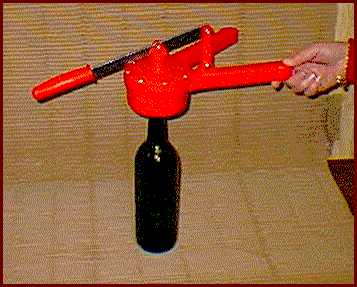 Wine bottles are never completely filled: a small amount of air must be
left in the neck to allow for thermal expansion and contraction. If too
little air is left in the bottle, the wine may expand and expel the cork;
if too much air is left in the bottle, the wine may spoil. Thus each
bottle has a minimum and maximum capacity.
Wine bottles are never completely filled: a small amount of air must be
left in the neck to allow for thermal expansion and contraction. If too
little air is left in the bottle, the wine may expand and expel the cork;
if too much air is left in the bottle, the wine may spoil. Thus each
bottle has a minimum and maximum capacity.
Given a certain amount of wine and a selection of bottles of various sizes, determine which bottles to use so that each is filled to between its minimum and maximum capacity and so that as much wine as possible is bottled.
The first line of input contains two integers: the amount of wine to be bottled (in litres, between 0 and 1,000,000) and the number of sizes of bottles (between 1 and 100). For each size of bottle, one line of input follows giving the minimum and maximum capacity of each bottle in millilitres. The maximum capacity is not less than 325 ml and does not exceed 4500 ml. The minimum capacity is not less than 95% and not greater than 99% of the maximum capacity. You may assume that an unlimited number of each bottle is available.
Your output should consist of a single integer: the amount of wine, in ml, that cannot be bottled.
2 10 2 4450 4500 725 750 10000 2 4450 4500 725 750
250 0